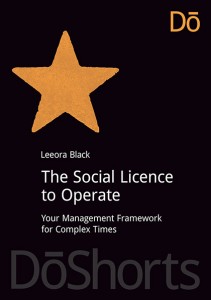SIENA is a program for the statistical analysis of network data, with the focus on social networks.
Networks here are understood as entire (complete) networks, not as personal (egocentered) networks: it is assumed that a set of nodes (social actors) is given, and all ties (links) between these nodes are known – except perhaps for a moderate amount of missing data.
SIENA is designed for analyzing various types of data as dependent variables:
- Longitudinal network data:
- This refers to repeated measures of networks on a given node set (although it is allowed that there are some changes in the node set). Models can be specified with actor-oriented as well as tie-oriented dynamics.
Longitudinal data of networks and behavior:
- This is like longitudinal network data, but in addition there are one or more changing nodal variables that are also treated as dependent variables, and referred to as behavior. The network will influence the dynamics of the behavior, and the behavior will influence the dynamics of the network. In other words, this is about the co-evolution of networks and behavior.
Cross-sectional network data.
- ‘Cross-sectional’ means that only one observation is available. This method uses exponential random graph models (‘ERGMs’), also called p* models.
The ERG model is implemented in SIENA version 3, but not any more in version 4 (RSiena).
The name SIENA stands for Simulation Investigation for Empirical Network Analysis.
The main approach used by SIENA for modeling dynamics of network (or of networks and behavior) is an actor-oriented model, in which it is assumed that the social actors who are represented by the nodes in the network play a crucial role in changing their ties to other actors; in the case of associated behavior dynamics, also in changing their behavior. All of these models are Markov chain models; such models are more applicable to relations and behavioral variables that can be regarded as states than to relations or behavior that are more adequately regarded as non-enduring events.
The statistical analysis in SIENA is done on the basis of computer simulation of the network. This can be time consuming. In view of the detailed approach to network dynamics and the required computing resources, the method is applicable in principle to networks on approximately 10 to 1,000 nodes.
A scientific summary is given below. The methods implemented in SIENA are described in the papers given in the webpage with literature. Some further articles with applications are given in the webpage with further applications. The program is obtained as a package within Rand the extensive manual is downloadable here.
There exists a User Group for Siena and StOCNET to exchange information and seek technical advice on using the Siena and StOCNET software to analyze network data.
The address is http://groups.yahoo.com/groups/stocnet/.
SIENA version 4 is also called RSiena, a contributed package for the R statistical system, which can be downloaded from http://cran.r-project.org.
The incorporation of RSiena in R makes available all other possibilities offered by R; in particular, to execute R in a Mac or Unix/Linux environment. Further information on RSiena is on the RSiena page.
The transition from the Windows-based SIENA 3 to the R-based, multi-platform SIENA 4, also called RSiena, is complete since Summer 2011, in the sense that practically all longitudinal functionalities of SIENA 3 have been implemented for SIENA 4; since then, many new functionalities have been added, and this is still going on.
The SIENA 3 program also contains methods for analyzing Exponential Random Graph Models (ERGMs). For the latter methods, users now are referred to the standalone program pnet or the R package statnet, although the old SIENA version 3 still is available for those who wish to use it.
Further work on the StOCNET interface is discontinued.
Known bugs and new papers are given at the news webpage.
The SIENA program is part of an ongoing research effort. The research team is composed of Tom Snijders, Christian Steglich, Johan Koskinen, Josh Lospinoso, Charlotte Greenan, Nynke Niezink, and Christoph Stadtfeld, with earlier contributions from Ruth Ripley, Krists Boitmanis, Paulina Preciado, Michael Schweinberger, Mark Huisman, and Marijtje van Duijn. Current research projects are given at theresearch projects webpage. Courses and a user group are mentioned at the activities webpage.
SIENA version 3 was written in Delphi, for use under Windows. For those who still wish to use Siena 3 it is strongly advised to use the most recent version. This can be downloaded from the downloads page.
The SIENA 3 program can be executed in two ways. Many people find it convenient to execute it from the StOCNET environment. It is also possible to execute SIENA 3 as a stand alone program. The StOCNET project was an activity of Christian Steglich, Tom Snijders, andSciencePlus (Minne Oostra), with important earlier contributions from Evelien Zeggelink, Peter Boer, Bert Straatman, Mark Huisman, and others.



 a political system in which policymakers with different powers seek to accommodate organized interest groups with different priorities, or
a political system in which policymakers with different powers seek to accommodate organized interest groups with different priorities, or Project management methodologies and organisations approach stakeholder mapping in different ways, but there are fundamental principles and processes that can be drawn out. I have distilled these principles into a proven 4 step process that can dramatically improve your chances of success.
Project management methodologies and organisations approach stakeholder mapping in different ways, but there are fundamental principles and processes that can be drawn out. I have distilled these principles into a proven 4 step process that can dramatically improve your chances of success.